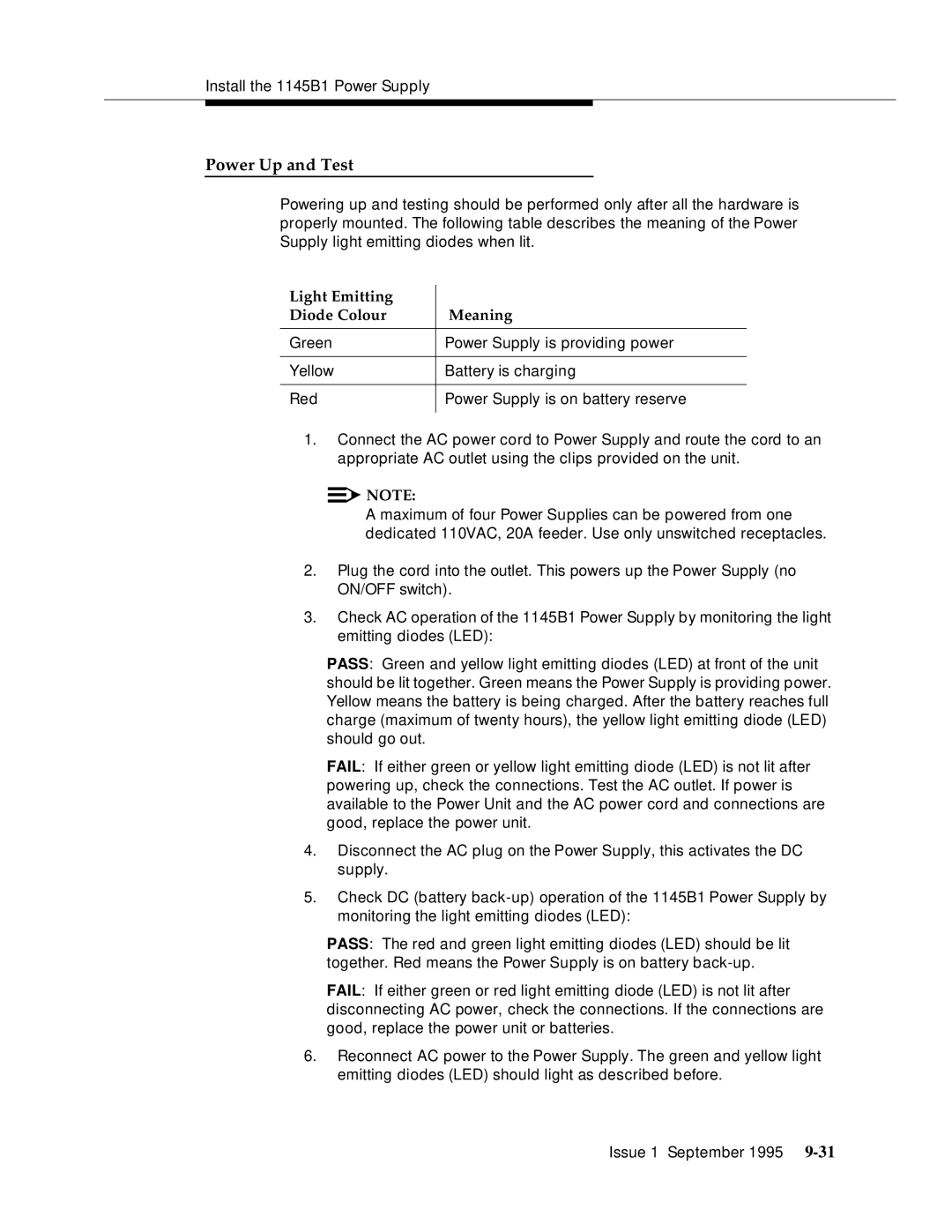
Install the 1145B1 Power Supply
Power Up and Test
Powering up and testing should be performed only after all the hardware is properly mounted. The following table describes the meaning of the Power Supply light emitting diodes when lit.
Light Emitting |
|
Diode Colour | Meaning |
|
|
Green | Power Supply is providing power |
|
|
Yellow | Battery is charging |
|
|
Red | Power Supply is on battery reserve |
|
|
1.Connect the AC power cord to Power Supply and route the cord to an appropriate AC outlet using the clips provided on the unit.
![]()
![]() NOTE:
NOTE:
A maximum of four Power Supplies can be powered from one dedicated 110VAC, 20A feeder. Use only unswitched receptacles.
2.Plug the cord into the outlet. This powers up the Power Supply (no ON/OFF switch).
3.Check AC operation of the 1145B1 Power Supply by monitoring the light emitting diodes (LED):
PASS: Green and yellow light emitting diodes (LED) at front of the unit should be lit together. Green means the Power Supply is providing power. Yellow means the battery is being charged. After the battery reaches full charge (maximum of twenty hours), the yellow light emitting diode (LED) should go out.
FAIL: If either green or yellow light emitting diode (LED) is not lit after powering up, check the connections. Test the AC outlet. If power is available to the Power Unit and the AC power cord and connections are good, replace the power unit.
4.Disconnect the AC plug on the Power Supply, this activates the DC supply.
5.Check DC (battery
PASS: The red and green light emitting diodes (LED) should be lit together. Red means the Power Supply is on battery
FAIL: If either green or red light emitting diode (LED) is not lit after disconnecting AC power, check the connections. If the connections are good, replace the power unit or batteries.
6.Reconnect AC power to the Power Supply. The green and yellow light emitting diodes (LED) should light as described before.
Issue 1 September 1995
